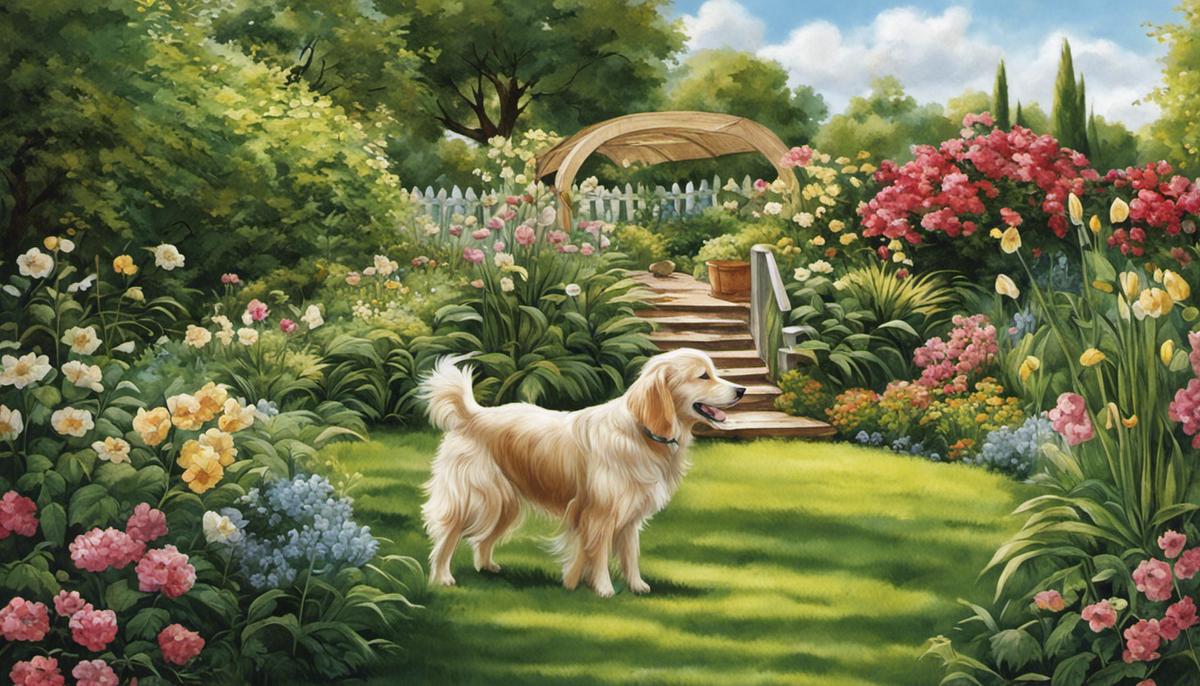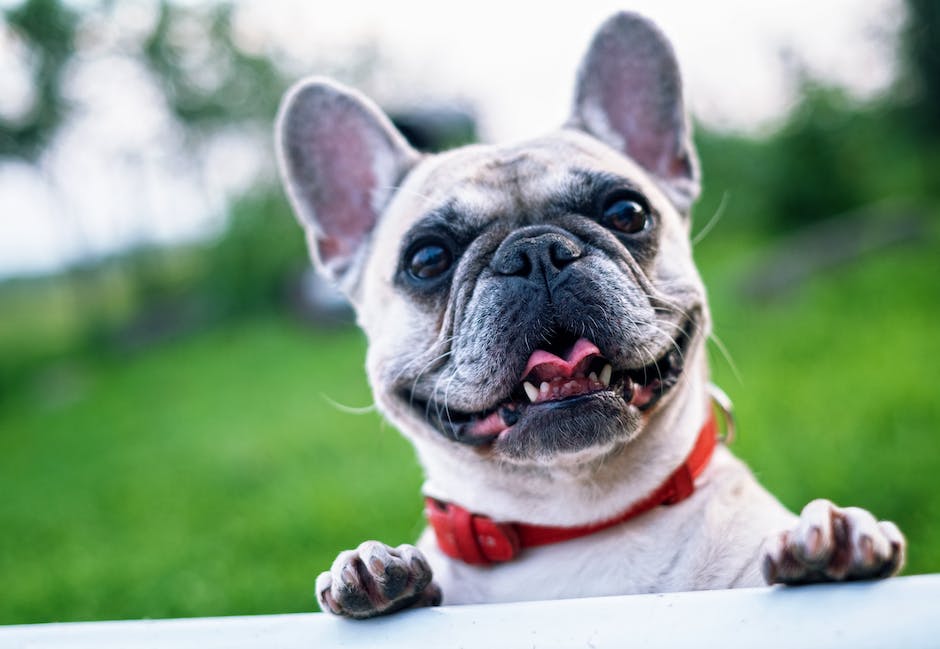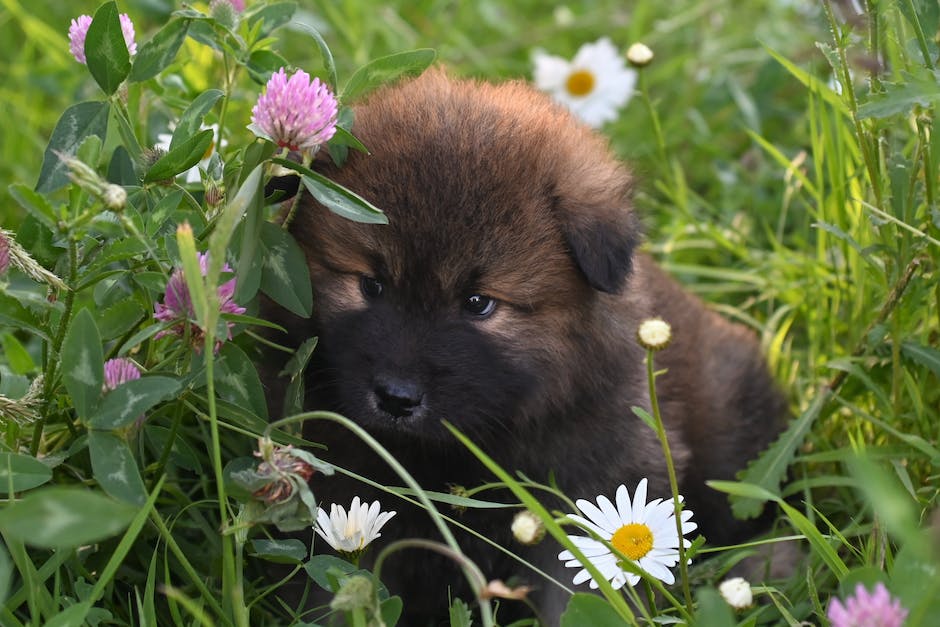Effective Ways to Keep Dogs Out of Gardens

Canine companions, while delightful, can often become quite a handful when it comes to maintaining a thriving garden. Natural curiosity of dogs and their boundless energy often leads to inadvertent destruction of the freshly planted beds and intricately maintained landscapes. In order to protect your garden and at the same time ensure your pet’s happiness and well-being, one needs to consider strategies rooted in understanding the canine behavior, dog-proofing the garden, and effective dog training. This multifaceted approach secures your outdoor oasis and continues good relations with your furry friends.
Understanding Canine Behavior
Canine Companions and Gardens: Unveiling the Mystique
Ever noticed how our furry family members – our beloved dogs – seem magnetically attracted to our gardens? One moment they’re lying by your side, the next bounding towards your garden just itching to scratch their paw at the earth. The behavior, while seemingly daunting, can provide a key into understanding your pet better while mitigating damages to your pretty set of tulips.
Scientifically, dogs are descendants from wolves – creatures known for their digging behaviors. This exhibit transcended generations and found a home in our pooches too. The rationale behind canine digging in gardens varies and can offer vital insight into their health, feelings, behavioral issues, and general needs.
Predominantly, our dogs dig as a mechanism to alleviate boredom. Our cheerful companions are energetic creatures who need physical and mental stimulation equivalent to a dog-friendly crossword puzzle. When boredom strikes, gardens become an appealing playground, offering endless fun and digging prospects. Regular exercise and quality playtime can be a terrific solution, keeping the mind engaged reduces their desire to explore your garden beds.
However, it’s not always about fun and games. Dogs also dig due to primal instincts. Their ancestors dug in search of food, water, and even warmth. Dogs could be replicating this behavior, hoping to “stumble upon” similar resources. Deep holes may also be a sign that your dog is trying to find cooler ground on a hot day — a shallow birthed doggie pool could be the answer here.
Now, can we blame them if they treat our gardens as treasure chests? Unknown to us, our gardens are full of tantalizing odors that pique dogs’ interests. Bugs, worms, or left-over buried toys can literally entice them to ‘dig deeper’. These buried treasures will no doubt stir curiosity and encourage a mini excavation project. In this case, the trick could be to maintain a clean, fresh garden.
Last but not least, it might be a cry for help. Digging is sometimes an indicator of anxiety or stress in dogs. After all, they too, like tiny toddlers, have emotional needs. Giving them a dedicated, safe space in the house can help your anxious diggers feel secure.
In summary, understanding why dogs tend to dig can lead us to appropriate preventative measures. In turn, this can save many a manicured lawn and most importantly, ensure that your furry friend is happy, healthy, and feeling loved. Occasionally, joining them in their garden antics might not be such a bad idea – it’s all about building connections and cherishing moments. After all, families – furry members included – that play together, stay together!
So, the next time you see your pooch heading for the lilac bush, remember it’s not about the ‘buried treasures’, it’s about feeling loved, secure and momentarily living wild. It’s a beautiful sharing opportunity and a great way of understanding their unique canine perspectives.

Dog-Proofing The Garden
Pooch Protection 101: How to Secure Your Garden from Your Four-legged Friend
With our first part discussing the reasons behind your furry friends’ love for digging in your heavenly oasis, we now move towards addressing methods to dog-proof your garden. Here’s to flourishing foliage and a happy canine friend at home.
Start with Stepping Stones
Creating pathways for your pups not only adds to garden aesthetics but also provides boundaries for them. Lay down stepping stones, brick, or gravel pathways where your dog usually saunters off. These are not doggy-favorites for digging, and in time, your pups will come to understand these as no-dig zones.
Erect Fencing
Fulfilling their exploratory instincts within limits can keep your dogs cheerful while keeping your garden intact. Installing a fence around flower beds or using outdoor baby gates can go a long way in protecting your precious green spaces.
Opt for Raised Beds and Containers
Raised beds and container plants are fantastic alternatives to ground-level gardening. Creating an elevated plant bed or using pots keeps your plants at a safe distance from your dogs, maintaining your garden’s charm, and keeping it snoop-friendly.
Grow Your Doggy’s Own Green Space
Design a specific space in your garden dedicated to your four-legged family member. A sandpit or a small corner filled with dog-safe toys and their preferred plants could become their new favorite spot. This can distract them from focusing on the more vulnerable areas of your garden.
Appealing Alternatives for Digging
If you’re dealing with a hard-core digger, try burying treats and toys that your pup can look for in their dedicated garden space. This can become a healthy outlet for their digging habits.
Maximize Bonding Time
Interaction is key. Extend your family time to the outdoors and enjoy games that your dog loves, like fetch or hide and seek. Regular physical activity and socialization can help reduce their digging habits caused by extreme energy or anxiety.
Training, a Perfect Detour
Training your four-legged buddy to understand commands such as ‘leave it’ or ‘no dig’ can be highly beneficial. Patience is crucial here. Celebrate their successful adherence to commands with a treat or a belly rub to reinforce their positive behavior.
Regular Nail Trims
Long nails encourage digging. Regular nail care routines can make your dogs less likely to dig and preserve the sanctity of your green haven.
As you venture into dog-proofing your garden, remember, consistency and patience are keys to success. Every dog is unique, and what works for one dog may not work for another. Keep experimenting with different techniques until you find one that fits your furry friend. The journey might be long, but the results will be a garden in perfect harmony with your dog, making it a win-win situation for all.

Training Dogs
Training: A Powerful Tool to Keep Your Pooch out of the Potting Soil
Let’s face it: as much as you love your pet, it’s disheartening to come home and find that Rover has been turning your precious petunias into his personal digging ground. We’ve talked about why our furry friends love to dig and the preventive measures we can take to control this behavior. But, there’s another significant aspect that sometimes we might, understandably, overlook.
That’s where training comes in handy.
Dog Training Can Help Avert Garden Excavations
Training your dog is not only about teaching them tricks or obedience. It can also be a systematic approach towards curbing undesirable behaviors that can help you retain your garden’s pristine condition.
Start with The Basics
Begin with primary command-based training. Practice a few straightforward commands such as “sit,” “stay,” and especially “leave it.” The command “leave it” can be perfect for preventing your dog from attacking your flower bed. Remember to keep a patient and consistent approach during training, and reward your pooch for following the command – this will ensure they understand it’s not just a command but also a route to their treat.
A Designated Digging Spot: The Perfect Diversion Strategy
After the primary command training, the next step is to designate an area where your dog is allowed to dig freely. Bury their favorite toys or treats there to motivate them to dig in that particular spot. Over time, this will become the go-to place whenever they feel the urge to dig.
Outdoor Activities and Interactive Games
These serve dual purposes: they enhance your bond with your dog and keep them engaged, reducing their potential garden digging urges. Try to spend more time outdoors playing fetch or Frisbee. You can also arrange ‘search the object’ games in the designated digging areas to divert their attention from the garden.
Consistency and Patience: The Two Pillars
Training takes time, and it requires consistency and patience. Help your dog to understand what’s allowed and what’s not. Gentle correction, along with consistent reinforcement of commands, can go a long way in imparting training effectively. Turning dog-proofing your garden into a fun, engaging, and learning journey will make it a wonderful experience for you and your four-legged family member.
Remember, training should be a positive, fun experience for your dog. So, lace your sessions with treats and praises to motivate them. You don’t need to turn into an obedience drill sergeant—stick to a warm, gentle, and consistent approach, and you’ll find yourself with not only a well-trained pet but also an intact garden to enjoy!

Understanding the inherent curiosity of dogs and redirecting it forms the foundation of protecting your cherished garden from their overenthusiastic tendencies. Implementing physical barriers and deterrents, while also providing an alternative play area for dogs, can prevent them from wreaking havoc in your garden. Coupled with proper training and obedience practices, these steps can help maintain the beauty of your garden while also ensuring an enriching environment for your dogs. After all, striking a balance between your love for gardening and caring for your dogs doesn’t necessarily have to be a tug of war.



